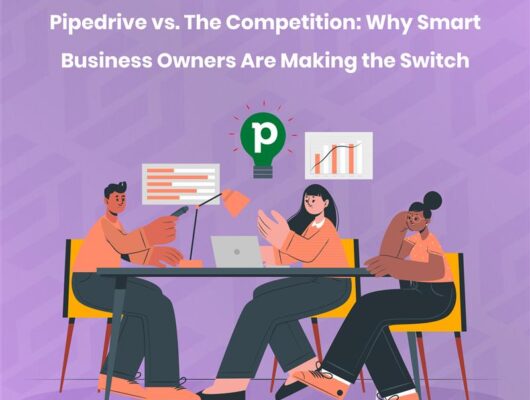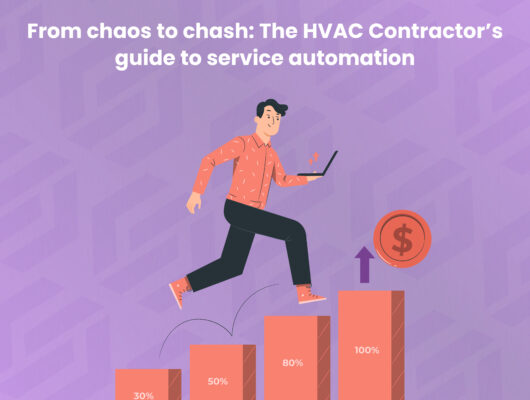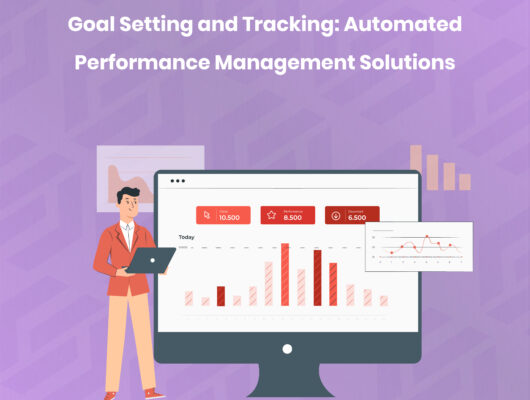Let me paint you a picture that’s probably all too familiar: It’s 7 PM on a Tuesday, and you’re still hunched over paperwork in your truck, trying to figure out why Mrs. Henderson’s invoice from last week never got sent out. Meanwhile, your phone is buzzing with three emergency calls, your best technician just texted that he’s running two hours behind, and you have no idea if tomorrow’s schedule is even accurate.
Sound familiar? Welcome to the daily reality of 78% of plumbing contractors across America.
Here’s the hard truth: Your plumbing business isn’t just fixing leaks in pipes – it’s bleeding money through operational inefficiencies that you probably don’t even realize exist. But before you throw in the wrench, I’ve got some good news. The same technology that revolutionized how we order pizza and hail rides is now transforming how smart plumbing contractors run their businesses.
The Hidden Money Drains That Are Killing Your Profits
Last month, I sat down with Mike, a plumbing contractor from Phoenix who was pulling in $500K annually but somehow taking home less than his lead technician. His story isn’t unique – it’s epidemic.
“I was working 70-hour weeks and barely breaking even,” he told me. “I thought I needed more jobs, but it turned out I needed better systems.”
The Big Four: Where Your Money Is Really Going
1. The Scheduling Black Hole Every minute your technician spends driving to the wrong address or waiting for parts that should have been ordered yesterday costs you real money. The average plumbing contractor loses 2.5 hours per technician per day to scheduling inefficiencies.
2. The Invoice Bermuda Triangle How many jobs have you completed but never billed? If you’re like most contractors, the answer is more uncomfortable than you’d like to admit. Manual invoicing systems have a 23% failure rate in service businesses.
3. The Customer Service Sink When customers can’t reach you, they call your competitor. When they can reach you but get poor service, they leave bad reviews. Either way, you lose.
4. The Administrative Abyss Time spent on paperwork is time not spent earning money. Yet the average plumbing contractor spends 15-20 hours per week on administrative tasks that could be automated.
What Is Automation? (And Why Every Smart Contractor Is Using It)
Let’s get one thing straight – automation isn’t about robots taking over your business. It’s about smart systems handling the boring stuff so you can focus on what actually makes money: plumbing.
Think of plumbing business automation as hiring the world’s most efficient office manager who never takes sick days, never makes mistakes, and works 24/7 for pennies on the dollar.
The Core Components of Modern Plumbing Service Software
| Feature | Manual Process Time | Automated Process Time | Weekly Time Saved |
|---|---|---|---|
| Scheduling | 8 hours | 30 minutes | 7.5 hours |
| Invoicing | 6 hours | 15 minutes | 5.75 hours |
| Customer follow-up | 4 hours | 5 minutes | 3.9 hours |
| Inventory tracking | 3 hours | 10 minutes | 2.8 hours |
| Total | 21 hours | 1 hour | 20 hours |
That’s 20 hours per week you could be spending on revenue-generating activities instead of pushing paper.
How Plumbing Business Management Software Actually Works
I know what you’re thinking: “This sounds great, but I’m not a tech guy.” Neither was Mike from Phoenix. Or Jennifer from Atlanta. Or Carlos from Denver. They’re all contractors who went from drowning in paperwork to running streamlined operations that practically run themselves.
The Magic Behind Field Service Management for Plumbing
Modern plumbing contractor software connects every part of your business like a nervous system. When a customer calls for service, here’s what happens automatically:
Step 1: Smart Scheduling The system instantly checks technician availability, location, skills, and travel time. No more playing phone tag or double-booking jobs.
Step 2: Automated Dispatch Your technician gets the job details, customer history, and optimal route sent directly to their mobile device. No more radio calls or missed communications.
Step 3: Real-Time Updates As the job progresses, everyone stays informed. Customer gets updates, office knows the status, and you can track everything from anywhere.
Step 4: Instant Invoicing When the job’s done, the invoice is automatically generated and sent. Payment processing happens on the spot. Money hits your account within hours, not weeks.
The Customer Management Revolution: Why Your Plumbing CRM System Matters
Here’s something that might surprise you: 73% of customers will pay premium prices for exceptional service. But exceptional service isn’t about being the cheapest – it’s about being the most reliable, responsive, and professional.
How Customer Management for Plumbers Has Changed the Game
Remember when customer service meant keeping business cards in a shoebox and hoping you remembered who needed what? Those days are as outdated as lead pipes.
Modern plumbing CRM systems track:
- Complete service history for every customer
- Preferred appointment times and communication methods
- Equipment ages and warranty information
- Recurring maintenance schedules
- Payment preferences and credit status
This isn’t just convenient – it’s profitable. Customers who feel remembered and valued become customers for life. And lifetime customers are worth 5-10 times more than one-time service calls.
The Follow-Up That Pays for Itself
Automated follow-up systems are like having a dedicated customer service rep who never forgets to check in. They send appointment reminders, maintenance alerts, and satisfaction surveys without you lifting a finger.
The result? 40% fewer no-shows, 60% more recurring maintenance contracts, and customer retention rates that would make your competitors weep.
Frequently Asked Questions: Addressing the Skeptics
“How Can Automation Actually Help My Plumbing Business?”
I get this question a lot, usually from contractors who’ve been burned by over-promised and under-delivered solutions. Fair enough.
Plumbing workflow automation helps in three critical ways:
Efficiency Multiplication: Instead of one person doing ten things poorly, you have systems doing each thing perfectly while your team focuses on high-value activities.
Error Elimination: Manual processes have human error rates of 3-5%. Automated systems? Less than 0.1%.
Scalability Without Insanity: You can grow from 2 trucks to 20 trucks without proportionally increasing your administrative overhead.
“What About Plumbing Invoice Automation? Does It Really Work?”
Short answer: absolutely. Long answer: it’s probably the fastest ROI you’ll see from any business investment.
Before automation: Average time from job completion to payment = 28 days After automation: Average time from job completion to payment = 3 days
That’s not just faster cash flow – it’s better cash flow. Automated invoicing reduces disputes, eliminates lost paperwork, and makes it easier for customers to pay you promptly.
“Is This Just for Big Companies?”
Not even close. Some of the biggest success stories I’ve seen come from solo operators and small teams. In fact, smaller companies often see more dramatic improvements because they have more to gain from efficiency improvements.
The Implementation Reality: What Actually Happens When You Make the Switch
Let me tell you about Jennifer, a plumbing contractor from Atlanta who was drowning in her own success. She was booked solid but couldn’t seem to get ahead financially.
“I was afraid that learning new software would slow me down even more,” she admitted. “But within two weeks, I was wondering why I waited so long.”
The Typical Transformation Timeline
Week 1-2: Setup and Learning
- System configuration (usually done by the software company)
- Basic training for you and your team
- Data migration from existing systems
Week 3-4: Finding Your Rhythm
- Initial resistance gives way to appreciation
- First “wow” moments as automation kicks in
- Noticeable reduction in administrative stress
Month 2-3: Momentum Building
- Significant time savings become apparent
- Customer satisfaction scores improve
- Revenue starts increasing from efficiency gains
Month 4+: The New Normal
- System feels natural and intuitive
- Business metrics show clear improvement
- You wonder how you ever operated without it
The ROI That Makes Your Accountant Smile
Let’s talk numbers, because ultimately, this is a business decision. The average plumbing contractor who implements comprehensive automation sees:
Direct Cost Savings:
- 60% reduction in administrative labor costs
- 40% decrease in fuel costs through route optimization
- 25% reduction in accounts receivable through faster billing
Revenue Increases:
- 30% more jobs completed per day through better scheduling
- 45% increase in recurring maintenance contracts
- 20% premium pricing ability through superior service
Real Numbers from Real Businesses
| Business Size | Annual Revenue Before | Annual Revenue After | Net Increase |
|---|---|---|---|
| Solo Operator | $150,000 | $210,000 | 40% |
| 3-5 Technicians | $450,000 | $675,000 | 50% |
| 6-10 Technicians | $800,000 | $1,200,000 | 50% |
Advanced Features That Separate Leaders from Laggards
Once you’ve mastered the basics, automated plumbing services open up possibilities that most contractors never even consider.
Predictive Maintenance Programs
Imagine if your system could predict when a customer’s water heater is likely to fail and automatically schedule a maintenance check. That’s not science fiction – it’s happening right now.
Dynamic Pricing Models
Peak demand pricing, customer lifetime value adjustments, and competitive rate analysis all happening automatically. You set the parameters, the system optimizes your pricing.
Integrated Marketing Automation
Automated review requests, referral incentive programs, and targeted marketing campaigns that bring in new customers while you sleep.
Common Pitfalls (And How to Avoid Them)
I’d be doing you a disservice if I didn’t mention the mistakes I see contractors make when implementing service business automation tools.
Mistake #1: Trying to Automate Everything at Once Start with scheduling and invoicing. Master those, then expand.
Mistake #2: Not Training Your Team Properly Your technicians need to understand why this helps them, not just how to use it.
Mistake #3: Choosing Software Based on Price Alone The cheapest option usually costs more in the long run through limitations and integration issues.
Mistake #4: Not Measuring Results Track your key metrics before and after implementation. The numbers will motivate continued improvement.
The Competitive Advantage: Why Early Adopters Win Big
Here’s something that keeps me up at night (in a good way): The contractors implementing plumbing scheduling software and automation today are building competitive moats that will be nearly impossible for their competitors to cross.
While other contractors are still playing catch-up with basic business practices, automated plumbing businesses are:
- Serving more customers with the same resources
- Providing better service at competitive prices
- Building customer loyalty through superior experiences
- Scaling their operations without proportional cost increases
The window for easy implementation is closing. As more contractors adopt these tools, the competitive advantage shifts from “nice to have” to “must have for survival.”
Future-Proofing Your Plumbing Business
The plumbing industry might seem traditional, but it’s evolving faster than a burst pipe on Christmas morning. Field service management for plumbing is becoming as essential as having the right tools in your truck.
What’s Coming Next
- AI-powered predictive diagnostics
- IoT sensors that alert you before equipment fails
- Virtual reality training for complex repairs
- Blockchain-verified certifications and warranties
The contractors who adapt to these changes will thrive. Those who don’t… well, let’s just say they’ll be competing on price alone, and that’s never a sustainable strategy.
Your Action Plan: Stop the Money Leak Today
We’ve covered a lot of ground, but here’s what really matters: Every day you delay implementing automation is another day your business bleeds money through inefficiency.
Step 1: Audit Your Current Processes
- Track how much time you spend on admin tasks this week
- Calculate your current job completion rate
- Measure your average invoice-to-payment time
Step 2: Research Your Options
- Look for plumbing business management solutions that integrate scheduling, invoicing, and customer management
- Read reviews from contractors in similar situations
- Request demos from top-rated providers
Step 3: Start Small but Start Now
- Begin with one core area (I recommend scheduling)
- Get your team trained and comfortable
- Measure the improvements
Step 4: Scale Systematically
- Add features gradually as you master existing ones
- Continuously optimize based on real performance data
- Stay updated on new capabilities and industry trends
Conclusion: The Leak Stops Here
Look, I’ve seen too many talented plumbers work themselves into the ground while their less skilled competitors prosper simply because they had better systems. Don’t let that be your story.
Plumbing business automation isn’t about replacing the human touch that makes your service special – it’s about eliminating the mundane tasks that prevent you from delivering that touch more effectively and profitably.
The contractors who are succeeding in today’s market aren’t necessarily the best plumbers (though being good helps). They’re the ones who’ve figured out how to leverage technology to amplify their skills, serve more customers, and build sustainable, profitable businesses.
Your next move is simple: Stop treating automation like a luxury and start treating it like the business necessity it’s become. Your future self – and your bank account – will thank you.
Ready to stop the money leaks in your plumbing business? The tools exist, the ROI is proven, and your competitors are already moving. The only question left is: What’s it costing you to wait another day?
Get started with our recommended plumbing automation solutions and join the hundreds of contractors who’ve already transformed their businesses. Because in the automation age, the choice isn’t whether to modernize – it’s whether you’ll lead or follow.





